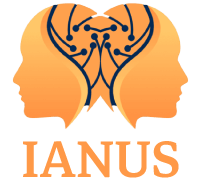George Gaskell’s home discipline is social psychology and in particular social representations, a theory of the collective common sense. The following illustrates the theory in action with an analysis of the introduction of transgenics in crops and foods, sometimes called GMOs, and the development of nanotechnology. Both transgenics and nanotechnology were described a base technologies that would bring widespread beneficial innovations in many areas of life.
In Europe, transgenics has been the object of considerable controversy from the mid 1990s to the present day including a recent ruling by the CJEU – Europe’s supreme court. By contrast, while those involved in the development of nanotechnologies were fearful of hostility from sections of the public, it turned out, and continues to be, a non-issue for the public.
One of the significant differences between the trajectory of these two technologies is that the regulation of nanotechnology anticipated its development and was established before nanotechnologies entered the public domain. By contrast genetically modified crops and foods entered the public domain without established regulatory arrangements.
It is arguable that the regulatory lacuna with GMOs fed the media interest, one of the key elements stimulating symbolic coping as theorised by Wagner and Kronberger. Symbolic coping involves four steps: awareness, divergence, convergence, and normalisation. First, triggered by the media, the public becomes aware of a new technological development. The expanding media coverage increases the range of images or representations that depict the novel technology in iconic form. Over time, the circulating imagination converges into a few well fitting representations. Transgenics found resonance with the myths of Faust and Frankenstein. The unfamiliar gene was associated with menacing images of infection, adulteration and monstrosity. The salad tomato was corrupted by genes from who knows where? Negative views and popular resistance to GMOs was shown to be related to the apparent absence of benefits to individuals and society, paralleled by NGOs promoting a fear unknown risks as they tore up field trials of GMOs in protective overalls suitable for nuclear power plant workers.
In the face of scientific uncertainty and regulatory hesitancy, as was apparent in the early years of covid-19 pandemic and the new mRNA vaccines, representations in the form of conspiracy theories emerged providing simple, and to some, plausible accounts of evil Manichaean plots seeking to impose illegitimate control over citizens.
Will history repeat itself with genome editing? Senior scientists have been calling for international regulations but little has been achieved thus far. With developments such as embryonic stem cell modes and concerns about germline interventions leading to eugenics and/or human enhancement, the stage is set for further symbolic coping in the public sphere. Is there a panacea? Probably not, as the speed of scientific innovation often outpaces that of regulation.
Social representations theory provides a conceptual framework for analysing and understanding the processes by which scientific innovation is seen as an extension of the normal, or a challenge that stimulates the collective search to establish its identity in everyday life. And, in passing, it has relevance to the body of science. Science needs to be open and transparent, recognise that while innovations may promise benefits there may well be downside risks that necessitate regulatory attention before and not after the event.
Sammut, G., Andreouli, E., Gaskell, G. and Valsiner, J. (2015); eds. The Cambridge Handbook of Social Representations.
